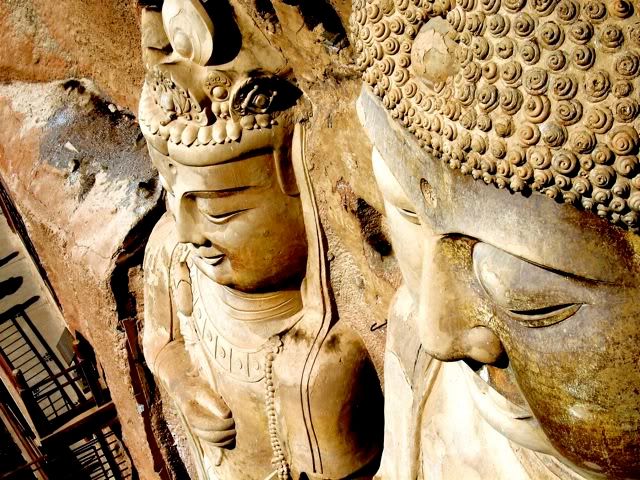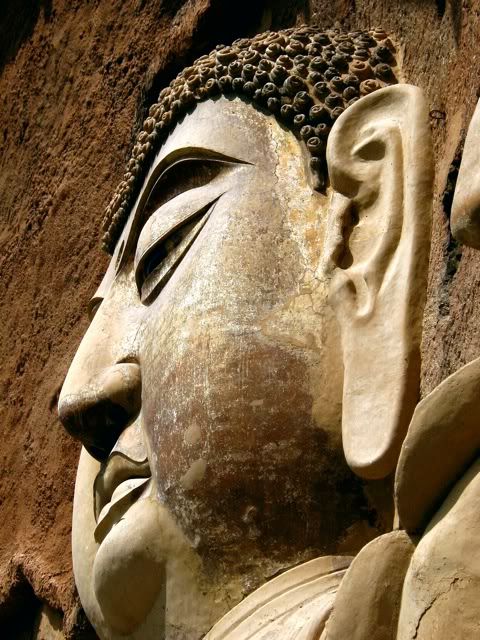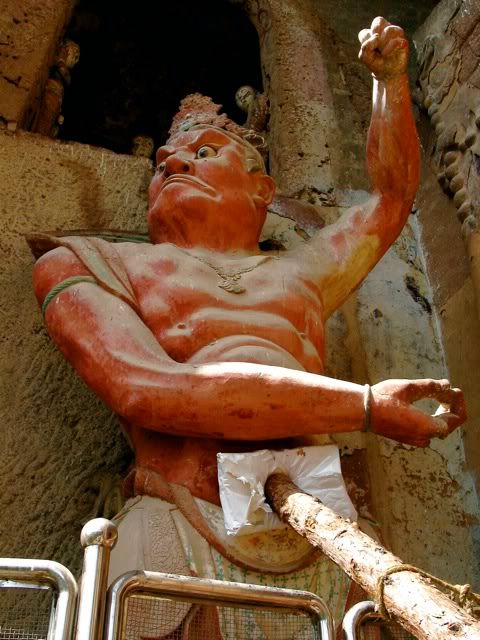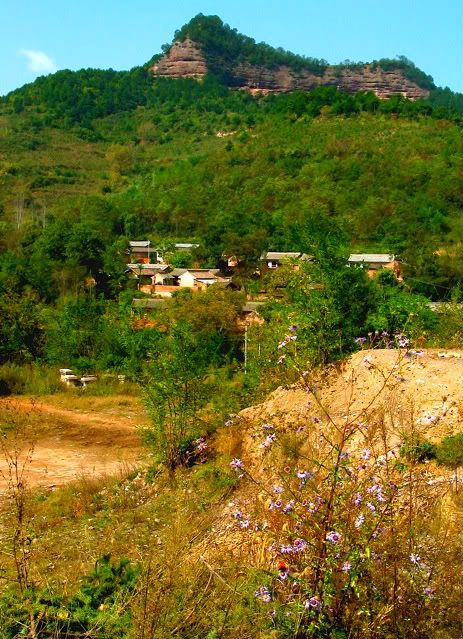We ended up going to Maiji Shan near the small city of Tianshui.
Here is a write-up as to what Maiji Shan is from mutzagh.org:
Maijishan Grottoes (Wheatstack Mountain), located on the northern side of the Qinling Mountain Range and at a height of 1,742 m above sea level, gets its name from its giant, haystack-like shape. The mountain's fame arises not just from its appearance, but from the many Buddhist caves that are gouged into its southwestern face. This is the fourth largest area of concentrated Buddhist grottoes in China, after Dunhuang, Datong and Luoyang. The area around and on the mountain is one of the most beautiful sights in Gansu for both stunning natural, and impressive man-made, scenery. The mountain, studded with caves and strapped by many winding walkways and spiral stairs, rises majestically from the surrounding heavily wooded slopes, so any visitor here with a bit of time on their hands could easily spend a few days hiking and admiring.We only spent a couple hours at the mountain and the Buddhist grottoes, but it was well worth the time we spent there.
It is the Buddhist Grottoes (Maijishan shiku), some dated from as early as the Northern Wei dynasty (386-534), that most visitors come here to see. On arrival at the sight the most prominent sculpture is the 16 m Buddha that is carved high up on the mountain. The grottoes, all packed together on the sheer, rocky cliff faces below and above this, look from afar like chambers of a gargantuan beehive. On ascending the mountain, the grottoes are divided into two sections, the western and eastern, since the central section was almost completely destroyed by an eighth century earthquake. The western section is probably the better, with statues and other Buddhist articles dating mainly from the Northern Wei dynasty to the Tang (618-907). Just ascending the mountain, on winding, rickety walkways and spiral stairs, with the wooded mountain panorama below, is a breath of fresh air for even the most unconvinced China traveler.
Read On
Here are some of the photos I took:











1 comment:
Very informative post. China is considered as a copious warehouse of Buddhist art. The vibrant murals are a perfect exemplar arts from primeval India, Greece and Iran.The vibrant murals are a perfect example of art, music and dance, political affairs, economic conditions are a significant part of their lives. Longmen Grottoes is a must visit where Mt. Xiangshan and the Mt. Longmen resemble couple of Chinese entrance towers.Maijishan Mountain is fourth biggest place of concerted Buddhist caves subsequent to Luoyang, Datong and Dunhuang Grottoes.
Post a Comment